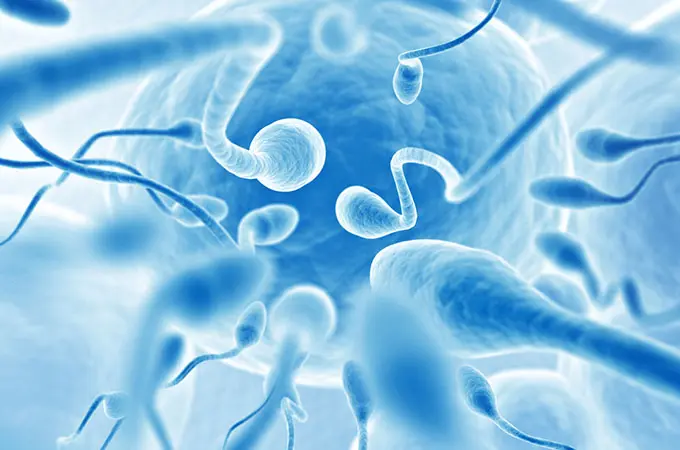Medical contribution by Paul Shin, M.D., one of Shady Grove Fertility’s Board Certified Urologist.
Fertility issues are often assumed to be the female partner’s responsibility; however, only 40 percent of infertility is due to female factor. A more accurate break down is 40 percent female factor, 40 percent male factor, 10 percent combined, and 10 percent unknown. Sperm quantity and quality can be negatively affected by many different environmental and lifestyle factors. In a recent Romper article, the power of seminal fluid was discussed, as well as the question: can sperm go bad?
Causes of Decreased Male Fertility
Sperm production and maturation is a dynamic, ongoing process for most men. Immature sperm originate from cells within the testis called germ cells and they go through a maturation process of approximately 2.5 months. As living cells within the testicle, they are subject to the same conditions and insults the rest of the body is trying to manage. Sperm health and reproductive potential are linked to good overall health, so the lifestyle choices that would benefit a man’s overall health dovetail nicely with good choices for his reproductive health as well.
The pathway for a sperm to find an egg is essentially a race through an obstacle course. At every step along the way there is an anatomic or functional hurdle that the sperm must overcome to continue the journey. From the point of ejaculation on the cervix to the final step of fertilizing an egg, only the strongest and luckiest sperm make it through. There is significant attrition of sperm along the way. Therefore, starting the race with as much sperm as possible is critical to achieving a successful pregnancy.
For most men with normal sperm counts, an everyday frequency of intercourse should not result in significantly lower numbers of ejaculated sperm. In some men, however, who have low sperm counts, spacing intercourse and ejaculation out every 2 to 3 days allows for better chances of achieving a pregnancy.
The effects of older paternal age on sperm and a man’s reproductive capacity are very active areas of current research. Men, like women, go through a reproductive and hormonal decline as they age, but this change is drawn out over many years. Even though new sperm are constantly manufactured, older paternal age seems to be associated with a longer time to conception as well as an increase in some neurocognitive disorders on the autism spectrum.
Does sperm go bad?
Does sperm go bad? In a word, no. Despite the added challenges in achieving pregnancy and the higher risk of autism spectrum disorders, most older fathers go on to achieve normal pregnancies in a timely manner. The central theme of earlier testing and urologic evaluation can improve a couple’s chances of success.
A semen analysis is often often recommended to evaluate a man’s reproductive potential. The main parameters that are evaluated are the volume, concentration, pH (level of acidity), motility, progression, consistency, shape, total motile sperm count, and the presence other cells. At Shady Grove Fertility, we are proud to have our own board certified, fellowship trained reproductive urologists to help patients diagnose, treat, and ultimately overcome male factor infertility.
To watch our On-Demand Webinar on Male Fertility, click here. During this free on-demand event, viewers will learn about the simple tests used to evaluate male fertility, common causes of male factor infertility, lifestyle changes that can improve a man’s fertility, effective treatment options and treatment success rates.
Editor’s note: This blog was originally published in August 2017, but was reviewed for accuracy in June 2018.






